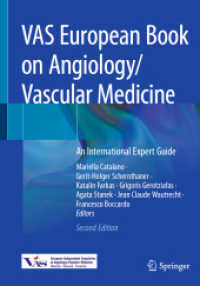- ホーム
- > 洋書
- > ドイツ書
- > Mathematics, Sciences & Technology
- > Technology
- > electronics, electrical engineering, telecommunications
Full Description
This monograph undertakes to present systematically the methods for solving inverse problems of lidar sensing of the atmosphere, with emphasis on lidar techniques that are based on the use of light scattering by aerosols.
-

- 電子書籍
- 2021年版 第1種衛生管理者試験模範…
-

- 電子書籍
- 毒草花苗店(ナーセリー) 青泉社






